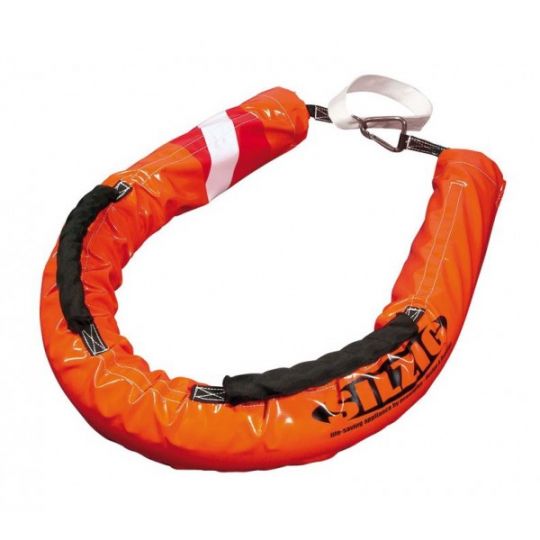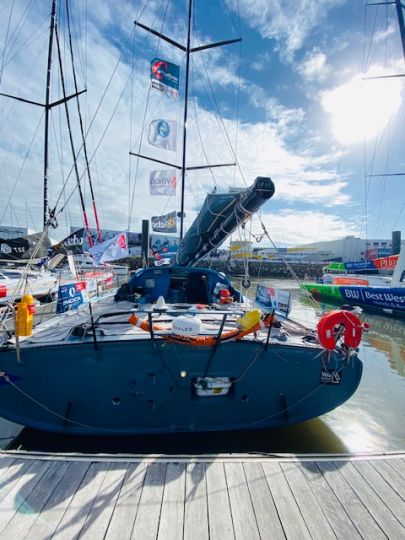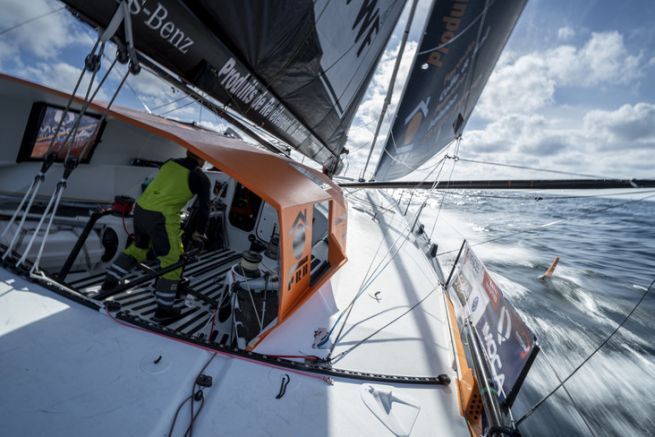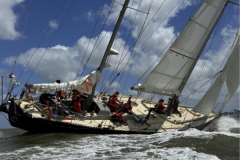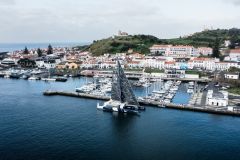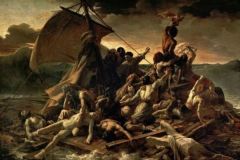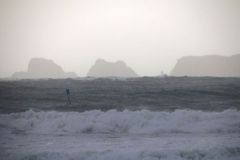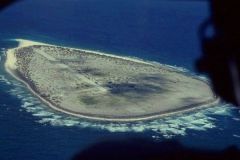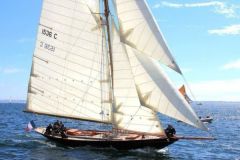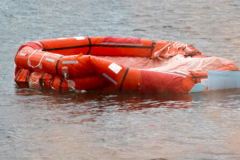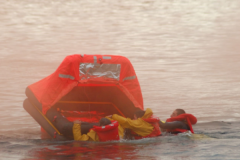Liferafts on the Vendée Globe IMOCA boats
The IMOCA boats taking part in the Vendée Globe have the specificity of being equipped with 2 liferafts (there is only one for the other races and for yachting)
- An offshore life raft, ISO 9650 standard, located inside the vessel either at the survival area or in the forward hold. This is the same liferaft that boaters are required to carry on their vessels when operating more than 60 miles from a shelter.
- A SOLAS pack A liferaft located outside the boat which can be installed at cockpit level or at the stern of the boat. The SOLAS liferaft is the one used by the merchant navy. "The IMOCA boats in the Vendée Globe are equipped with this liferaft, as before 2005, there were no iso 9650 standards for life rafts. The only difference will be in the density of the fabric, as they are more robust, especially designed to be thrown more than 30 metres high from the cargo ships and they have to be overhauled every year. There is no difference in terms of equipment", entrusts us with Manuel Guedon, a specialist in safety at sea.
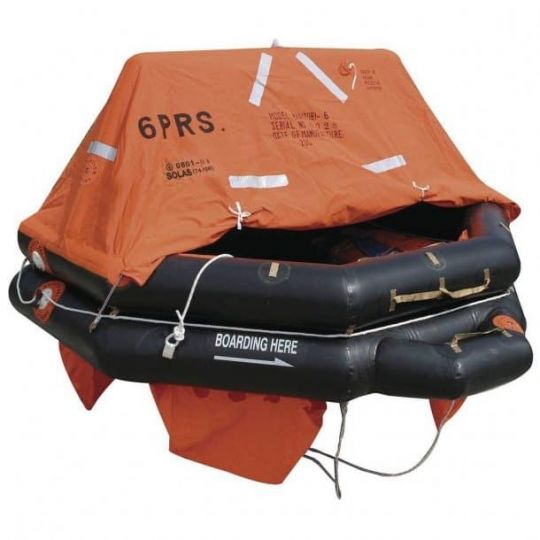
As for Kevin Escoffier, his boat broke in two in a 27-knot wave leading to the sudden sinking of his IMOCA PRB to the south of South Africa. "I looked at the bow, it was at 90 degrees. Within seconds, there was water everywhere. The stern of the boat was under water and the bow was pointing up to the sky", testifies Kévin Escoffier. His IMOCA PRB was equipped with an offshore life raft located in the forward (inaccessible) hold. He therefore used the SOLAS liferaft located outside at cockpit level. It should be noted that this happened in a matter of seconds, and with the right gestures and dexterity he managed to reach his liferaft to save his life .
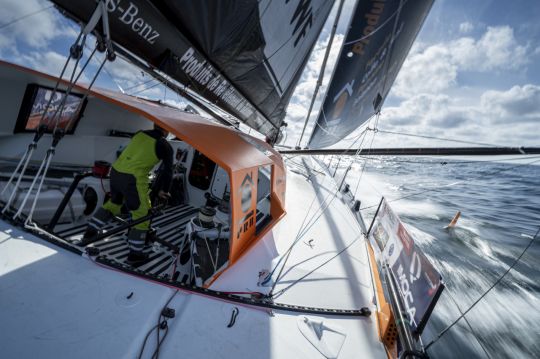
The evacuation decision: waiting until the last moment
The decision to evacuate the boat is always a difficult one. And it only has to be taken if the boat is sinking, which was the case for skipper PRB's IMOCA.
The two main reasons for leaving the ship are:
Of course, it is preferable to stay in or on the boat as long as possible in case the boat overturns and does not sink.
What to do before getting in your life raft
Before launching the liferaft into the water, first make sure that its mooring line is properly struck on the boat; it takes about 10 seconds for the liferaft to inflate. The line will be cut once inside the boat.
Before leaving the ship and if time permits, the distress should be reported by indicating its position. This is what Kevin Escoffier did, by activating his distress beacon at 14:46 on Monday, November 30, 2020, and sending a message to his PRB team "I'm sinking, it's not a joke, MAY DAY" .
If the situation allows you, you must also equip yourself with your survival suit and take your survival canister (grab bag) that you will have prepared beforehand and which can contain complementary elements to the life raft equipment (GPS with battery / VHF with battery / Iridium / Food / Water / Identity paper / Specific medicines / Beacon / Tools).
Concerning Kevin Escoffier, he only had time to take his survival suit and he had a MOB AIS beacon in his watch jacket, which allowed Jean Le Cam to position him. Nevertheless, as the sea was very rough, they lost sight of each other and it was notably thanks to the flashlight fitted on the arch of the liferafts (offshore and Solas) that Jean Le Cam was able to visualise him. It is of course thanks to the excellence of these two sailors that the rescue was able to work when the conditions were extreme. By throwing the Silzig (lifebuoy) at the right time Jean Le Cam managed to save Kevin Escoffier.
Kevin Escoffier will have spent 11 hours in his raft in rough seas and we understand why "Keeping your spirits up" is the priority when you're in a life raft
